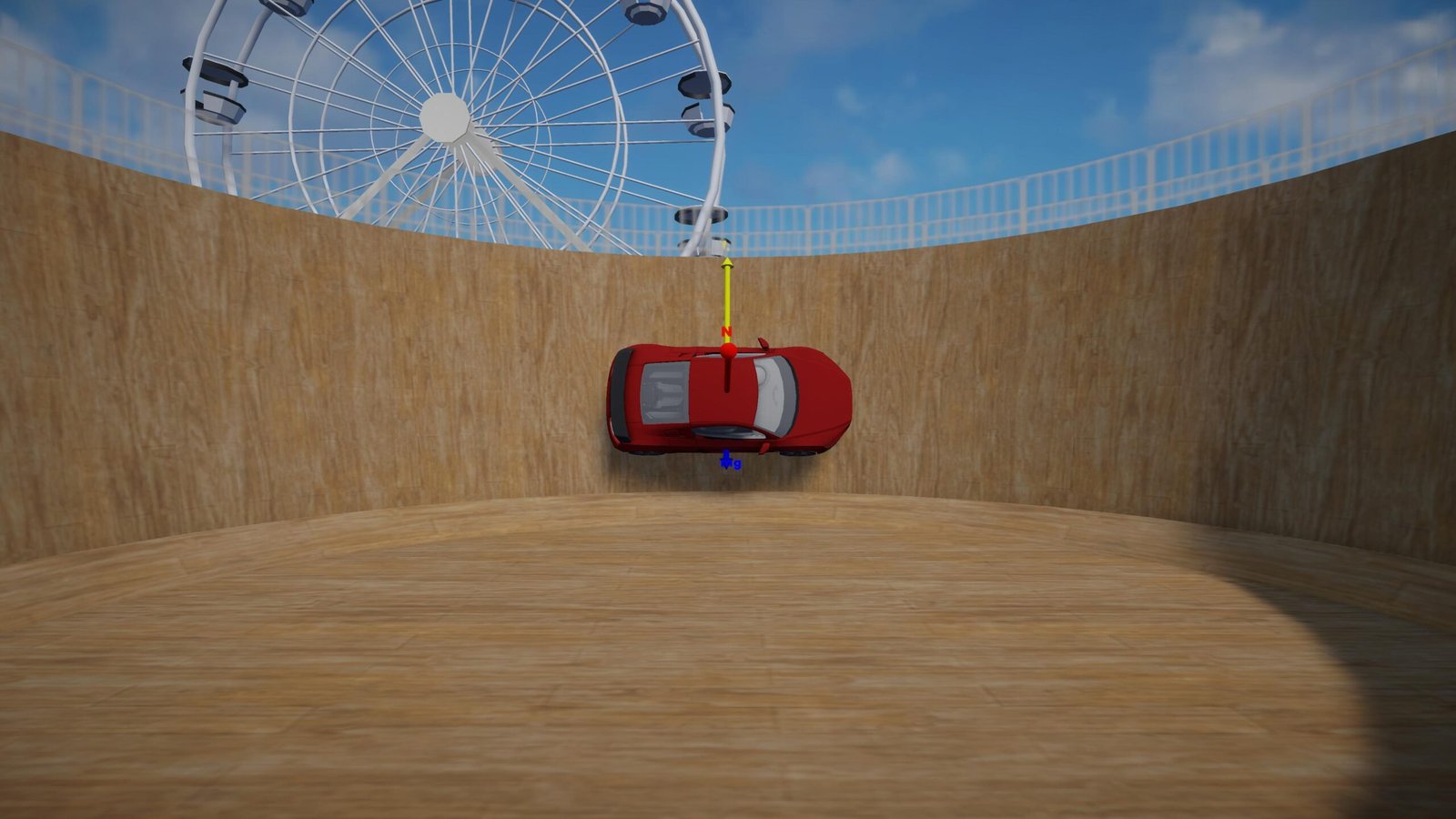Well of Death Experiment – For Schools, Teachers, and Students
Definition
The “Well of Death” is a stunt often performed in circuses and fairs, where motorbikes or cars move along the vertical walls of a cylindrical structure. Performers maintain their motion through a combination of centrifugal force and friction, creating the illusion of defying gravity.
This concept is demonstrated in Dencity – Online Science Lab and Simulations to enhance interactive learning.
Theory
The physics behind the “Well of Death” is based on circular motion, centrifugal force, and friction. When a vehicle moves along the vertical walls of the cylindrical structure, its motion is governed by:
- Centrifugal Force (F_c): Acts outward from the center of the circle, pressing the vehicle against the wall. It is given by:F_c = (m v²) / rwhere m is the mass of the vehicle, v is its velocity, and r is the radius of the circular path.
- Frictional Force (F_f): Acts upward, opposing gravity to prevent the vehicle from slipping down. The maximum frictional force is proportional to the normal force exerted by the wall:F_f = μ F_cwhere μ is the coefficient of friction between the tires and the wall.
- Gravitational Force (F_g): Acts downward and is given by:F_g = m g
For the vehicle to stay on the wall without slipping, the frictional force must counteract gravity:
μ F_c ≥ F_g
Substituting for F_c, the condition becomes:
μ (m v² / r) ≥ m g
Simplifying, the minimum velocity required for the stunt is:
v_min = sqrt(r g / μ)
The performer must maintain a speed above v_min to ensure sufficient centrifugal force and friction to counter gravity. Stability depends on precise control of speed and balance.
Real-World Applications
The physics of the Well of Death has various real-world applications, including:
- Physics Education: Demonstrates circular motion and forces in classrooms and science labs.
- Entertainment & Stunt Performances: Used in circus acts and amusement rides.
- Engineering & Design: Inspires centrifugal testing equipment and amusement park ride designs.
- Online Science Lab: Helps students simulate the Well of Death interactively.
Observations and Key Learnings
- Increasing the mass (m) of the vehicle increases centrifugal force, but also increases gravitational force.
- Increasing the radius (r) of the well reduces the required speed (v_min) for stability.
- A higher coefficient of friction (μ) allows the stunt to be performed at lower speeds.
- If the vehicle speed drops below v_min, it will slide down the wall due to insufficient friction.







